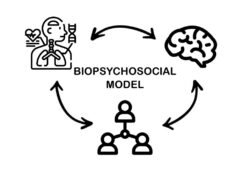
The Need for Mental Health Support
In 2021, 131 undergraduate students at the University of Toronto completed a survey to assess current mental health status, stigma level of typical therapy and interest in a horticulture therapy program.
Participants reported high levels of stress and anxiety, with 29% of students reporting “always” feeling nervous or stressed in the past month.
In addition, 78% of students believe there is a stigma associated with going to therapy.
Although 65% of students have had positive experiences with therapy, 35% of students indicate that the high costs of therapy are a barrier for attending.
To cope with the high academic stress of university, undergraduate students often resort to negative coping strategies that provide temporary relief like using drugs, drinking and smoking (Pariat et al., 2014; Kushwaha et al., 2019).
Since the pandemic, students have reported an overall decrease in their mental wellbeing and physical activity (Savage et al., 2020). This along with decreased socialization from lockdowns and school closures has led to unfavourable mental health outcomes among undergraduates.
How Therapeutic Horticulture can help
Given that 84% of students indicated that horticulture therapy is less stigmatized than traditional therapy and 53% indicated that they “probably will” enrol in a Therapeutic Horticulture Program if one was offered at their school, there is much incentive and interest in establishing this initiative at the University of Toronto.
Having this therapeutic option available that has less stigma will allow for even students with higher levels of stigma towards mental health programs access to services that can help them.
Embracing a Biopsychosocial Model
To support students in a holistic way, Therapeutic Horticulture uses a biopsychosocial model – that is, it emphasizes the interconnection between one’s biology, psychology and socio-environment. Therapeutic Horticulture promotes physical activity through its hands-on activities, socializing through its group environment and mental wellbeing because at its core, it is a therapeutic intervention. This model is also important to embrace, because many of the issues that students face affect them in these three domains. For example, there is a correlation between suicide attempts and social withdrawal and dropping out (Ishii et al., 2018). Social isolation has not only been tied to mental health decline, but also negative physical health effects (Holt-Lunstad & Steptoe, 2021). Thus, an intervention that addresses the domains of biology, psychology and socio-environment is essential. For an additional example of the biopsychosocial model, check out this article.
Wellness Ambassadors
Currently, our future wellness ambassadors are completing the “Horticulture Therapy in Practice” course under Mitchell L. Hewson.
Here, they are learning the essential skills of
- Clinical assessment
- Plant propagation and knowledge
- Diagnostic categories and criteria
- Volunteer management
- Proper tool use
- Safety protocol
- And much more!